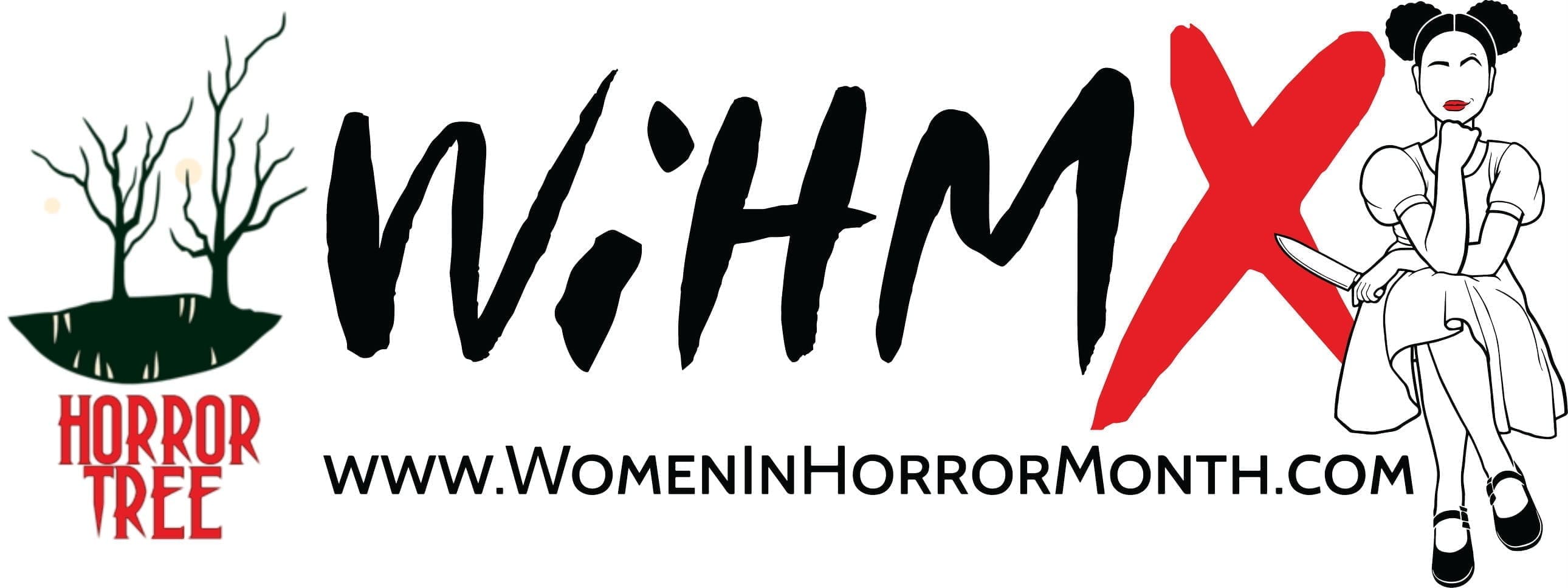WIHM: Creating Monsters

Creating Monsters: Women’s empowerment in horror fiction, on-screen and behind the scenes
By Madison McSweeney
The pages of horror fiction have always provided homes for the outcasts, the marginalized. The genre’s greatest characters are strange figures doomed to life in the shadows – unfairly judged for their appearance, haunted by past traumas, or condemned for not fitting in. They live complicated lives – but they’re also capable of feats unimaginable to mere mortals.
In a way, it’s no surprise that women are drawn to these stories. After all, horror is a place where women are not only able to reject, but also transcend, the barriers society imposes on them.
In what other genre could a meek teenager fight off a hulking, inhuman killer? And with knitting needles, no less? Yes, female characters often meet bad ends in horror fiction – as do males. But in final girls, we find symbols of survival and triumph.
That said, it’s not just in fighting the beast that the women of horror find empowerment. The horror genre is heavily populated by women who identify with monsters, seeing in them beings as misunderstood as themselves. King Kong is a tragedy not because beauty kills the beast, but because the beast is killed just as he finally encounters a kindred spirit. (As an actress in 1930s, Ann Darrow certainly knew what it felt like to be objectified and exploited). The woman/monster relationship is finally consummated in Guillermo Del Toro’s The Shape of Water, in which protagonist Elisa Esposito heroically rescues her amphibious lover from a government lab. In the film’s final scenes, the Amphibian Man kills his captor (a sinister government agent who had sexually harassed Elisa earlier in the movie) before gallantly whisking Elisa into a watery wonderland.
In some of the most radical horror texts, female characters become monsters themselves – and in doing so, reclaim their agency. Anne Rice’s Vampire Chronicles series, for example, introduces a variety of Strong Female Vampires – most notably Gabrielle de Lioncourt, the strong-willed mother of the Vampire Lestat. In life, Gabrielle was an educated and independent woman who resented her marriage to a small-town nobleman; after being transformed into a vampire on her deathbed, Gabrielle shocks her son by discarding her feminine trappings, cutting ties with her mortal family, and embarking on a series of grand adventures to far-flung corners of the earth. As a vampire, she achieves things she could only dream of in the human world.
It’s no coincidence that women had a hand in all of the works mentioned above. The original King Kong was written by James Creelman and Ruth Rose, an actress and research historian who had taken part in expeditions to Africa and South America. (source: https://books.google.ca/books?id=j-GOIZo5mcoC&pg=PA28&redir_esc=y#v=onepage&q&f=false). Its 2005 remake, in which the romance between Darrow and Kong is more lovingly fleshed out, was written by Fran Walsh and Philippa Boyens, as well as director Peter Jackson. The more explicitly feminist The Shape of Water was written by Guillermo Del Toro alongside Vanessa Taylor. And John Carpenter’s Halloween, which introduced one of cinema’s toughest scream queens, was of course co-written by producer Debra Hill.
Horror stories are places of heightened emotion and high stakes, where reality and fantasy blend together. The genre lends itself well to satire and social critique, and countless female creators have used horror as a vehicle to explore the issues women face. In 1891, Charlotte Perkins Gilman wrote her psychological horror masterpiece “The Yellow Wallpaper” to protest the sexism of the medical system – particularly her own doctor, who advised her to abandon creative pursuits in favour of a domestic life. More recently, filmmaker Mary Harron’s adaptation of American Psycho was a blood-spattered satire of toxic masculinity. Jennifer Kent’s terrifying debut The Babadook made a monster of a widowed mother’s turmoil, and Julia Ducournau’s 2016 body horror shocker Raw used its protagonist’s cannibalistic transformation to explore female sexual awakening and sisterly relationships.
For women in horror, the act of creation can be as radical as the story itself.
I sometimes reflect on that fateful summer in Geneva, in which Lord Byron, John Polidori, Percy Shelley, and an eighteen-year-old Mary Godwin spent many a rainy evening brainstorming stories of the macabre. It was Mary Shelley’s creation that truly came to life: her tormented monster would go on to become a household name and star of stage and screen, not to mention a potent metaphor for intolerance, abandonment, and isolation.
Contemporary reviewers, of course, singled out Shelley for criticism due to her sex; the British Critic noted: “The writer of it is, we understand, a female; this is an aggravation of that which is the prevailing fault of the novel.” (source: https://www.rc.umd.edu/reference/chronologies/mschronology/reviews/bcrev.html)
In the decades since, women in horror have continued to raise eyebrows. In the 1930s, Margaret Brundage’s scandalous Weird Tales illustrations shocked the pulp community – and redefined the look of horror. A decade later, Shirley Jackson received hate mail after her grim short story “The Lottery” was printed inThe New Yorker. And in a piece published on Horror Tree last year, horror author Kim Plasket said that she’s still frequently asked, “What kind of romance story do you write?” (source: https://horrortree.com/wihm-kind-romance-story-write/)
Since its inception, the horror genre has allowed female creators to confound society’s expectations of them – to defy social mores, critique injustices, and, when all else fails, create new worlds where antiquated gender norms hold no power.
Madison McSweeney
 Madison McSweeney is a Canadian horror author and poet. She has published short stories in a number of outlets including Deadman’s Tome, Zombie Punks F*ck Off, Women in Horror Annual Vol. 2, and Unnerving Magazine. Her blog, which covers music, movies, and genre fiction, can be found atwww.madisonmcsweeney.com. She lives in Ottawa with her family and her cat.
Madison McSweeney is a Canadian horror author and poet. She has published short stories in a number of outlets including Deadman’s Tome, Zombie Punks F*ck Off, Women in Horror Annual Vol. 2, and Unnerving Magazine. Her blog, which covers music, movies, and genre fiction, can be found atwww.madisonmcsweeney.com. She lives in Ottawa with her family and her cat.
- About the Author
- Latest Posts
The Horror Tree is a resource for horror authors which was created in 2011. The main goal when starting the site was to include all of the latest horror anthologies and publishers that are taking paying submissions. A resource useful for both new and experienced publishers alike looking for an outlet for their written material!












